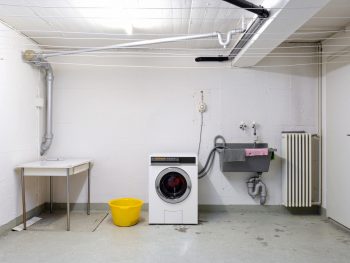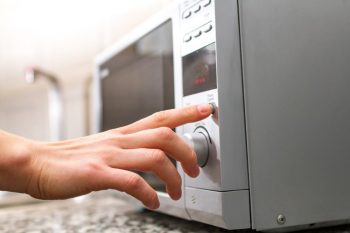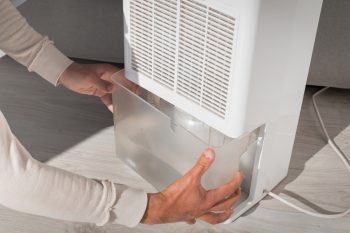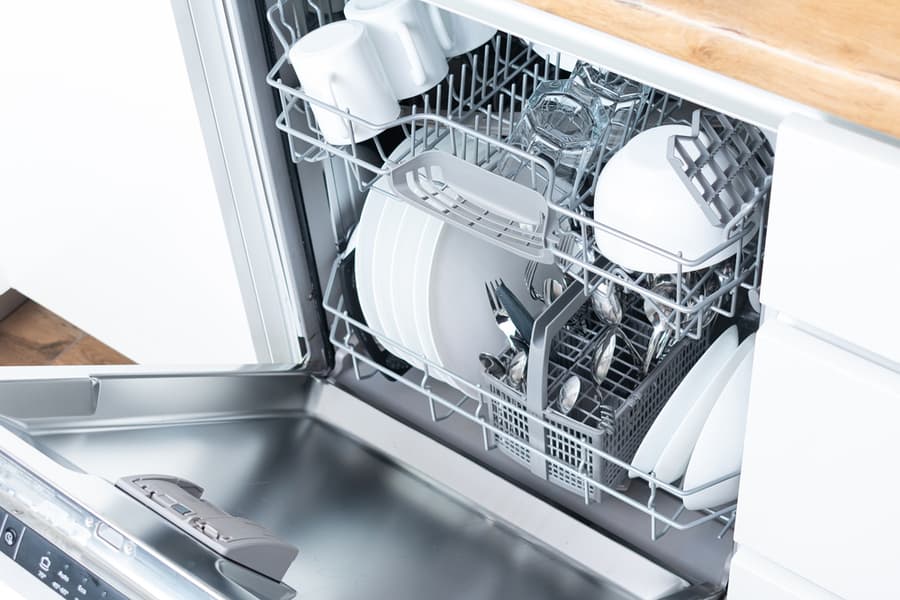
Do you have trouble draining water from your dishwasher?
A malfunctioning dishwasher can be a major inconvenience, primarily if you use it daily. However, several factors may be responsible if your dishwasher has stopped draining water properly.
This article will walk you through some of them and outline simple steps to resolve them.
A Thermador dishwasher that is not draining may be due to one or more of the following:
- Clogged drain hose.
- Defective drain plug.
- Defective drain valve.
- Improperly installed garbage disposer, etc.
Below, we will explain why Thermador dishwashers may not drain and how to resolve the problem. Let’s get started.
Possible Reasons Your Thermador Dishwasher Is Not Draining
Before you spend a lot of money on a technician or a new dishwasher, you can take simple steps to troubleshoot and solve the problem.
Below, we consider some reasons dishwasher may not drain properly and the DIY tips to fix the problem:
1. Clogged Drain Hose
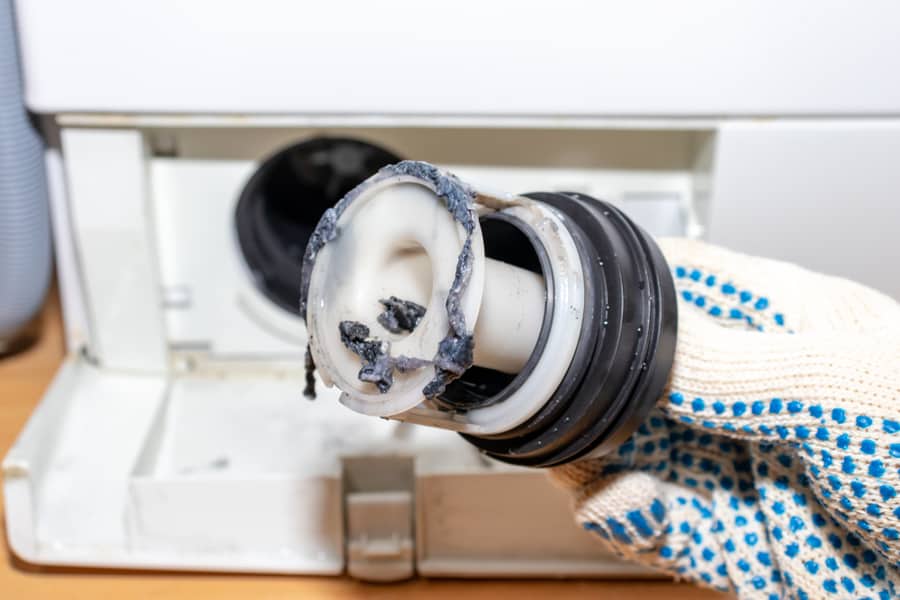
A clogged drain hose is one of the main reasons a Thermador dishwasher may not be draining. The drain hose carries the wastewater out of the dishwasher into the sink drain or garbage disposal.
When the drain hose becomes blocked, it can prevent water from flowing out, leading to standing water in the dishwasher. Common culprits of a clogged drain hose include food particles, grease buildup, or kinks.
To address this issue, follow these steps:
- First, turn off the power supply to the dishwasher.
- Next, locate the drain hose and detach it from the sink or garbage disposal.
- Next, check the hose for any signs of blockages or obstructions, such as food particles or grease buildup.
- Next, use a long, flexible brush or a plumber’s snake to remove debris from the hose if there are blockages.
- Finally, straighten out any kinks in the hose.
- Finally, reattach the hose to the sink or garbage disposal, ensuring it is adequately secured.
2. Dirty Filter
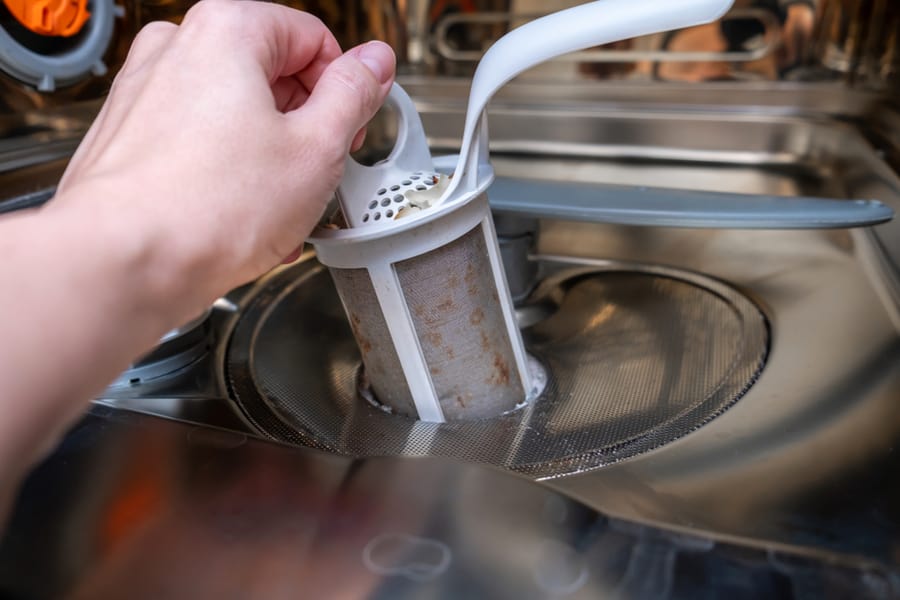
Over time, the filter in your Thermador dishwasher can accumulate dirt and become clogged with food particles and other debris. This, in return, will prevent water from draining correctly.
To check if the filter is dirty, consult your dishwasher manual for instructions on locating and removing the filter.
After confirming the blockage, you can roll up your sleeves and follow the steps below to remove dirt from the filter:
- Turn off the power supply to the dishwasher.
- Locate and remove the filter.
- Rinse the filter under hot water to remove any visible debris.
- Use a soft brush or sponge to clean the filter with warm, soapy water.
- Rinse the filter thoroughly and let it dry completely before reinstalling it in the dishwasher.
- Reinstall the filter.
- Turn on the power supply and run a cycle to see if the dishwasher is now draining properly.
3. Defective Drain Pump
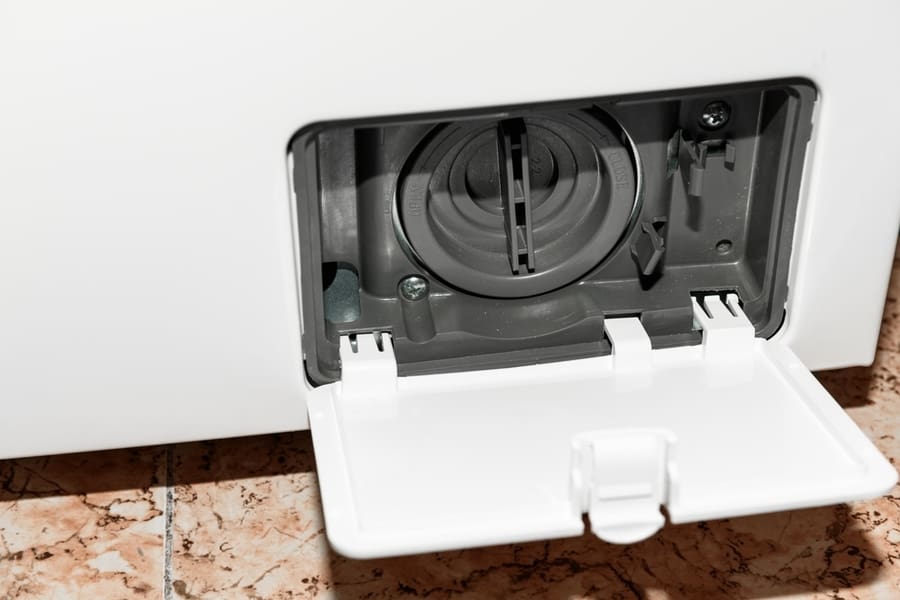
Another likely reason a Thermadol dishwasher may not drain water is a defective drain pump. The drain pump is the dishwasher part responsible for pumping out the water from the appliance during the drain cycle.
If the drain pump is defective or not functioning properly, then it can cause the dishwasher not to drain properly.
But before you jump to the conclusion that your drain pump is defective, take time to run some confirmatory tests. Signs of a defective drain pump include a humming noise when the dishwasher is running.
In some cases, there may be no sound at all. The last sign to check is when the dishwasher stops draining water.
To fix a defective drain pump, follow the steps below:
- First, switch off the power supply to the dishwasher.
- Next, find the drain pump in your dishwasher (consult your dishwasher manual if needed).
- Finally, inspect the drain pump for any visible signs of damage, such as cracks or leaks.
- Use a multimeter to check the electrical continuity of the drain pump. If the multimeter shows no continuity, the drain pump is defective.
- If there is no continuity, replace the pump with a new one.
- Reconnect any electrical connections, and reassemble any parts you removed during the inspection.
- Turn on the power supply and run a cycle to see if the dishwasher is now draining properly.
4. Defective Drain Valve
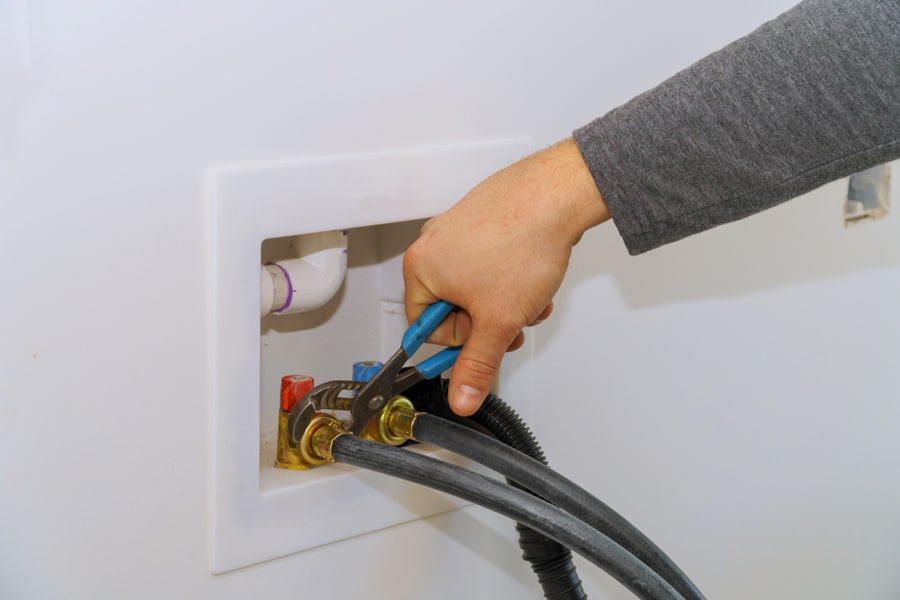
The drain valve controls the water flow out of the dishwasher during the drain cycle. If the drain valve is defective or not functioning properly, it can cause the dishwasher not to drain water properly.
Signs of a defective drain valve include water not draining out of the dishwasher or a slow-draining dishwasher.
To address this issue, follow the steps below:
- First, turn off the power supply to the dishwasher.
- Next, find the drain valve in your dishwasher (consult your dishwasher manual if needed).
- Finally, inspect the drain valve for any visible signs of damage, such as cracks or leaks.
- Use a multimeter to check the electrical continuity of the drain valve. If the multimeter shows no continuity, the drain valve is damaged, or there is no continuity, replace the valve with a new one.
- Ensure to reconnect any electrical connections and reassemble any parts you removed.
- Turn on the power supply and run a cycle to see if the dishwasher is now draining properly.
5. Improperly Installed Garbage Disposer
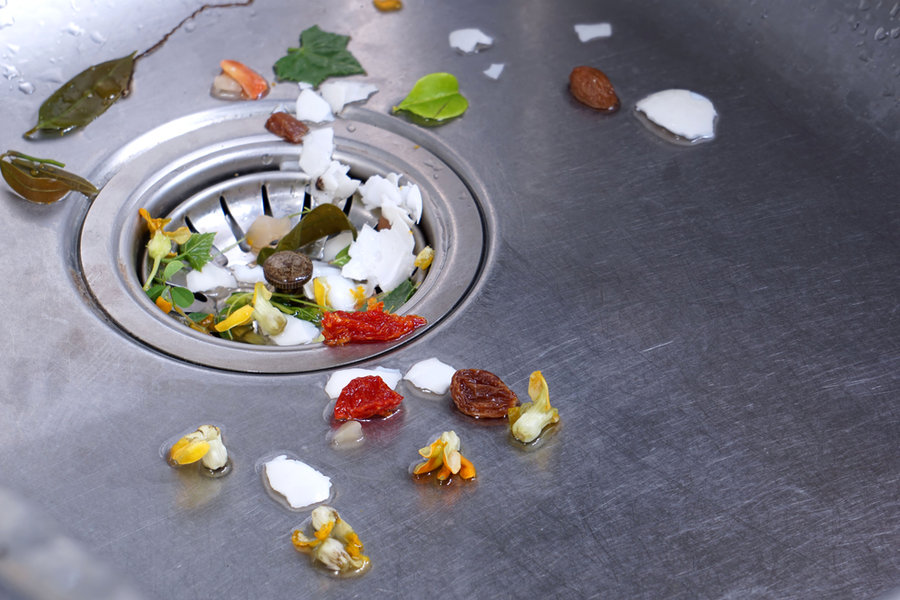
Improper garbage disposal installation can prevent a Thermador dishwasher from draining properly. In addition, when the disposer is not connected correctly, it can obstruct the drain hose, affecting its connection. This, in return, will cause the dishwater not to drain properly.
So, if you have connected your garbage disposer to a Thermador dishwasher and It is not draining properly, you must install it properly.
Below are some steps you can follow to fix this problem:
- First, unplug the power supply to the dishwasher.
- Next, look for the drain hose that connects the dishwasher to the garbage disposer.
- Ensure the drain is connected correctly to the disposer and is not obstructed.
- Finally, check that the knockout plug inside the disposer has been removed.
- If the disposer was recently installed or replaced, ensure that the disposer’s drain connection is clear and free of obstructions.
- Turn on the power supply and run a cycle to see if the dishwasher is now draining properly.
6. Check the Ball
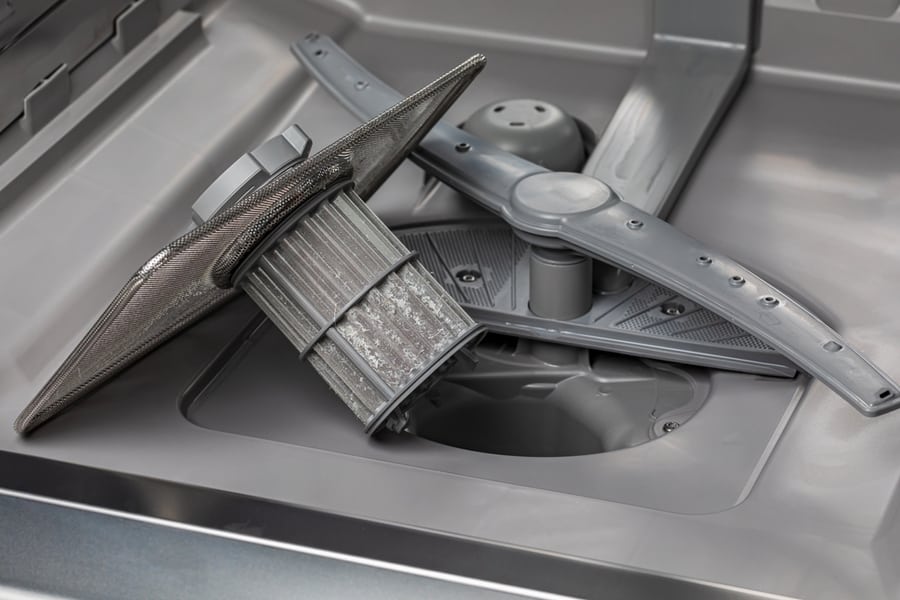
Some Thermador dishwashers have a check valve ball inside the drain pump assembly. If this ball is stuck or not functioning correctly, it can cause the dishwasher not to drain.
To address this issue, here are the steps to take:
- First, remove the dishwasher plug from the power supply.
- Next, locate the drain pump assembly and remove the cover.
- Check the drain valve to see if it is stuck or damaged.
- If it is damaged, replace it with a new one.
- Reinstall the cover and turn on the power supply.
- Run a cycle to see if the dishwasher is now draining properly.
7. Clogged Air Gap
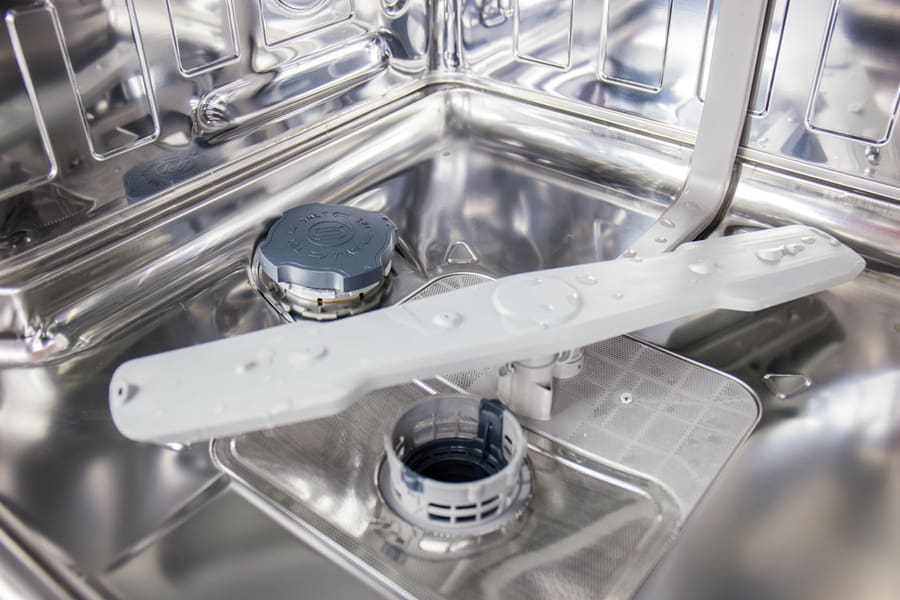
An air gap is a small device usually located at the sink or countertop and connected to the dishwasher’s drain hose. Its purpose is to prevent dirty water from flowing back into the dishwasher.
Sometimes, the air gap can become clogged with food particles or other debris, preventing the dishwasher from draining properly.
To address this issue, follow these steps:
- First, unplug the dishwasher from the power supply.
- Then, locate the air gap and remove the cap.
- Check the air gap for any signs of blockages or obstructions, such as food particles or grease buildup.
- If there are any blockages, use a small brush or toothbrush to remove the debris from the air gap.
- Reinstall the cap and turn on the power supply.
- Run a cycle to see if the dishwasher is now draining properly.
How To Tell if Your Dishwasher Drain Hose Is Clogged
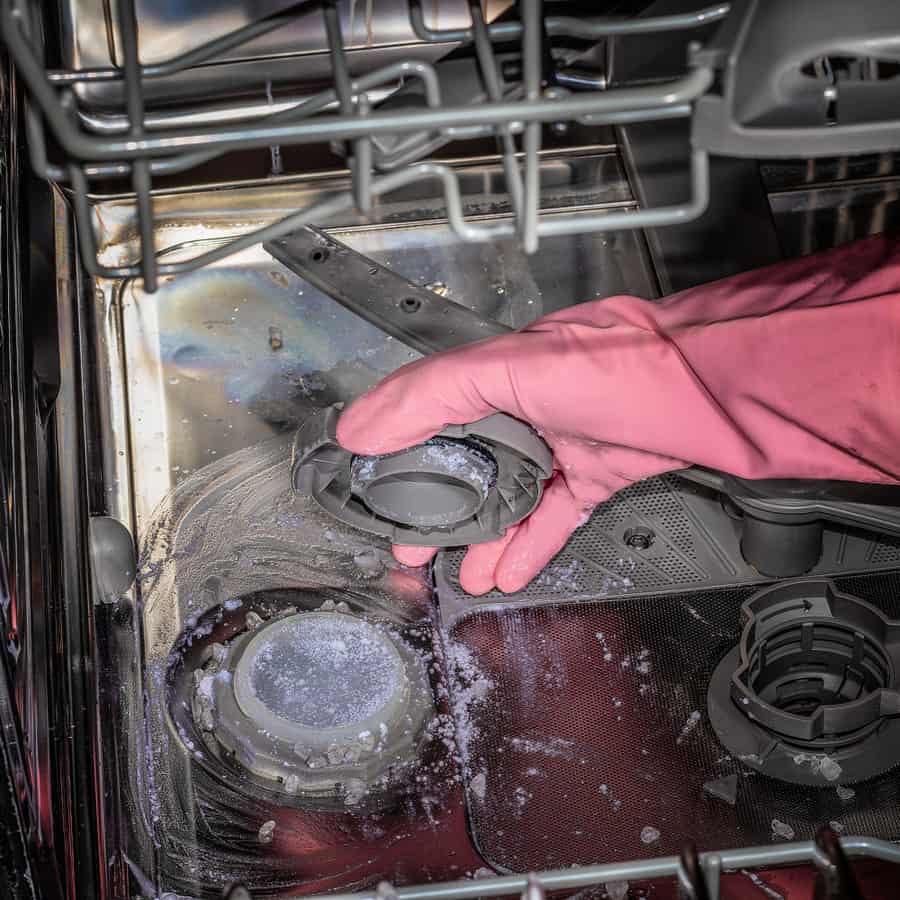
A clogged drain hose is a common cause of water not draining from a dishwasher. If your dishwasher is not draining properly, and you suspect the drain hose is clogged, there are a few tricks to confirm your suspicion.
Firstly, standing water at the bottom of the dishwasher is a clear sign of a drainage issue. If water is left in the dishwasher after a cycle, it could be a sign that the drain hose is clogged.
Secondly, slow draining is another sign of a clogged drain hose. If you notice that the dishwasher is draining slowly or gurgling sounds are coming from the drain, it may be due to a clogged drain hose.
Another telltale sign of a clogged drainage hose is a foul odor coming from the dishwasher. The buildup of food particles and debris that cannot drain properly can cause unpleasant smells.
Lastly, a visual inspection can help identify signs of a clogged drain hose. Check the drain hose for any kinks, bends, or holes that may obstruct the water flow.
If you suspect the drain hose is clogged, try cleaning it by removing any visible blockages and flushing it with water. However, if the problem persists, replacing the drain hose or seeking professional help may be necessary.
Useful Tips To Help Your Thermador Dishwasher Drain

To prevent your dishwasher from not draining, consider the following tips:
1. Clean the Filters
Regularly cleaning the dishwasher filters prevents clogs, food particles, and debris buildup. The filters are usually located at the bottom of the dishwasher near the spray arms and can be easily removed and cleaned.
2. Check the Drain Hose
Check the drain hose periodically to ensure it is free from obstructions or kinks that impede the water flow. You may need to replace the drain hose if you notice any blockages or damage to the hose.
3. Ensure Proper Installation
Ensure the dishwasher is installed correctly and connected to the drain and garbage disposal. A poorly installed dishwasher can cause drainage problems.
4. Avoid Overloading
Avoid overloading the dishwasher with too many dishes or using the wrong detergent. Before starting the dishwasher, run hot water in the sink to ensure that the water entering the dishwasher is hot and can dissolve the detergent properly.
This helps prevent the buildup of soap scum, which can lead to clogs over time.
Conclusion
Thermador dishwashers not draining water can be caused by various factors, such as clogged filters, blocked drain hose, faulty drain pump, malfunctioning check valve, or even damaged garbage disposal.
Identifying the root cause of the problem is crucial to effectively troubleshooting and repairing the issue. However, it is recommended to seek professional help for complex or hazardous repairs to avoid further damage to the dishwasher or self-injury.
Regular maintenance, such as cleaning the filters and drain holes, can also prevent drainage problems and prolong the lifespan of your Thermador dishwasher.
Frequently Asked Questions
How Do I Force a Thermador Dishwasher To Drain?
To force a Thermador dishwasher to drain, start by turning it off and unplugging it from the power source. Then, locate the drain pump and remove any debris or blockages preventing the pump from functioning correctly.
Check the drain hose for any kinks or obstructions preventing the water from draining properly. Once any issues have been addressed, plug the dishwasher back in and turn it on to test if it drains properly.
Why Is There Standing Water at the Bottom of My Dishwasher?
Standing water in the bottom of a dishwasher is a common issue that can occur for several reasons. One of the most common causes is a drain or garbage disposal clog.
When the dishwasher drains, the water may not be able to flow through the drain hose and, instead, remains in the bottom of the dishwasher. Another possible cause is a clogged filter or drain gasket.
Is There a Way To Manually Drain a Dishwasher?
Yes, there is a way to drain a dishwasher manually. Start by turning off the power supply to the dishwasher. Then, remove any visible debris or blockages from the drain pump or drain hose.
Once any blockages have been cleared, use a container or towel to remove standing water from the bottom of the dishwasher.
How Do I Drain a Thermador?
Press the “Cancel Drain” button, turn off the dishwasher, and unplug it from the power source. Then, remove the drain hose from the sink or garbage disposal and place it in a bucket.
Once the bucket is in place, plug the dishwasher back in and turn it on to activate the drain pump and remove the water from the dishwasher.





